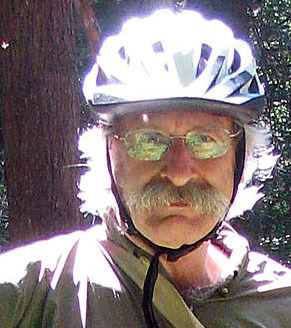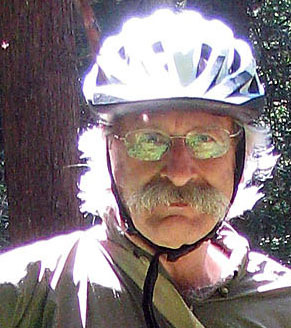
Bringing people back to the table
Dan Burden is director of innovation and inspiration for the Walkable and Livable Communities Institute and a keynote speaker at “8-80 Cities Forum: The Doable City,” a Knight Foundation-sponsored conference on fostering livable cities slated for June 16-18 in Chicago. Above, Dan leads a walkability study tour of Linden, Mich. Credit: Michigan Municipal League.
I am standing with Ron Stein in a hallway. He recognized me, and with a smile I remember from 20 years ago, comes over and greets me with enthusiasm. In 20 years, we have both lost much of our hair, but he recognizes me by my vest and stature. I know his face, but have to ask how we know one another.

Walkability expert Dan Burden
“Dan, you helped create my organization and built my career, with Vision Long Island. In these 20 years we have rescued more than 100 towns, and you launched us!”
Recollecting all this, I remember how we brought Huntington, Long Island, alive through a series of intensive workshops. Three hundred Long Islanders were doing what they do often, disagreeing on their future. When we started, there was insistence that they not change anything. They were especially opposed to creating a parking garage. They knew what they did not want; they were focused on battling that issue.
I assembled a team to focus instead on what they did want. They wanted authentic place, safe streets and a livelier downtown. When we finished our process a week later, 100 percent of those 300 people knew what they wanted; and in the end, they all wanted a parking garage… In order to enhance place, they had to convert many surface parking lots. This town also enthusiastically built the first roundabouts in its state, launching many New York towns to follow suit. Now there are many hundreds, almost always bringing people together to build safety, added intersection capacity and gateways to slow traffic.
The future of America requires us to focus on those things we want. Some of these changes can come easy, such as improving an open eyesore, a vacant lot, into a park or community garden. Some only involve using roadway striping paint to slow traffic rather than to speed it up. Some require us to look at our roadway capital improvement plans and build Complete Street elements. But ALL require that we reinvent public engagement.
In a book published in 1911, “The Principles of Scientific Management,” the author launched a number of principles that have stripped residents and business owners of their community involvement. The author assumed that common sense and knowing the hearts of residents had to be stripped from decision-making – just the opposite of what Thomas Jefferson believed. And with this perspective was born an age where specialists – including traffic engineers – were given freedom to do what they wanted. Fifty years later, Jane Jacobs in her 1961 book, “The Death and Life of Great American Cities,” saw the folly in having specialists, rather than generalists, design our cities. Today many of our town planners know that we need the people back in the process; we need to build social capital, the real energy behind building anything of lasting value in any community, and this path starts with fun and engaging public gatherings and workshops. The future of cities belongs to the people. The future requires all people to understand that we can either build transportation through our cities; or we can build our cities through transportation.
Recent Content
-
Community Impactarticle ·
-
Community Impactarticle ·
-
Community Impactarticle ·


